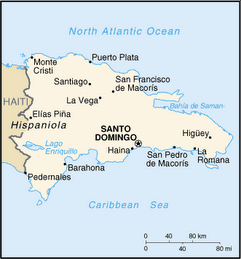Today was a day of National Mourning in Haiti - many churches also declared three days of fasting. An estimated 217,000-250,000 have been declared victims of the earthquake. Thousands still live in makeshift housing. Some are still being found beneath the rubble.
Housing has come to the forefront of necessities to be resolved. A rain shower on Thursday afternoon evidenced how fragile many of the "tent" shelters are. Many of these "tents" are nothing but sheets strung up around a mattress. The rain easily penetrates, soaks the mattress and whatever other items the people may have inside and creates streams of water that carry mud, human waste and trash along with it. This was just a random shower. When the rainy season begins at the end of March, it will rain every afternoon for several hours, usually accompanied by high winds.
Some organizations have decided not to distribute any more tents in favor of dedicating efforts to beginning construction of more stable housing. For now, the best option seems to be to bring in prefabricated houses that they hope will come in the form of donations from developed countries. There are still some estimated 700.000 that are in need of housing.
The beginning of the rainy season also changes the health perspective. Water-borne diseases are now becoming the focus: cholera, dysentery, malaria and dengue.
Cell phone coverage has improved but is still not completely restored. Haitians can call out to the Dominican Republic, but we still are not able to call there. When you do try to make a call, it may go through but gets cut off right away.
The government is trying to organize the schooling situation. As of Feb. only 15% of children have returned to classes. The earthquake destroyed 5.000 schools and a million and a half children are waiting for classes to recommence. There is also a shortage of teachers since many of them were killed in the earthquake. The DR is making plans to donate 15 mobile classrooms to Haiti to help them get started with classes.
The food situation has also taken a new turn. Of the food that is available prices have shot up. Rice and corn are up by 25%, price of wheat has raised 50%. The World Food Program alone distributes 680 tons of food every day but it is estimated that 10% of that ends up on the black market. The food is in the country, is being distributed, but still is not reaching many of those who still need it.
Subscribe to:
Post Comments (Atom)






No comments:
Post a Comment